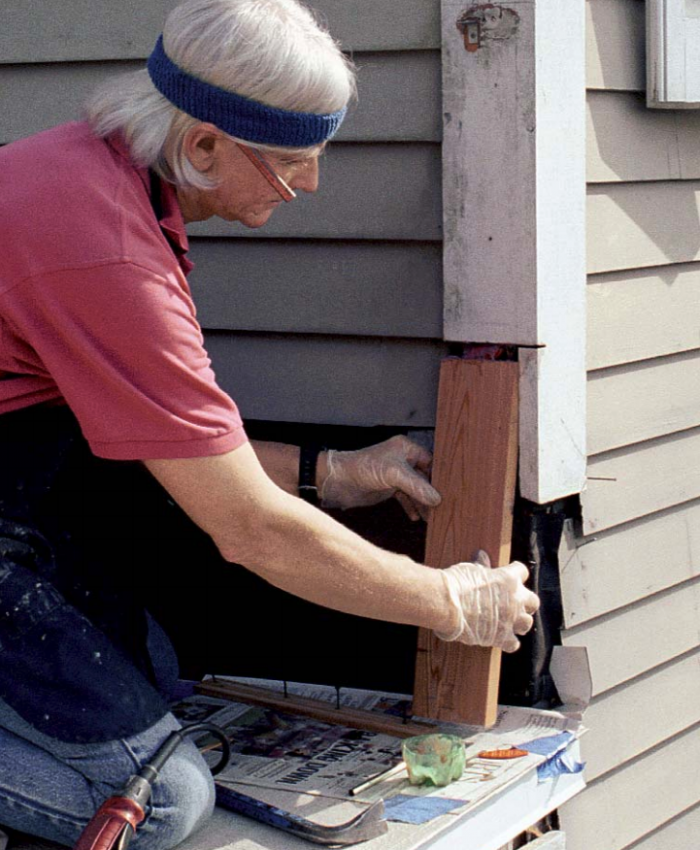Repairing Rotten Trim
Don't replace the whole board; cut out the damage and make a perfect patch.

Synopsis: This article offers a detailed description of how plastic biscuits and marine epoxy can be used to patch exterior trim, saving you the trouble and expense of replacing an entire board.
If I look hard enough at any house here in New Orleans, I’m sure to see one: a length of casing, fascia or corner board, with a hideous scarf joint only a foot or two from the end. This joint wasn’t put there by the builder; it was added years later to repair a rotten section of trim.
We get a lot of rot down here, and the ends of the boards are often the first to go. When they do, the standard repair is to cut back to undamaged wood at a 45º angle (what’s known as a scarf joint), then attach a new section of trim using yellow glue and finish nails. Sometimes it looks good — for a while.
After a year or two of seasonal movement, however, the joint separates, the rot sets in again, and the whole thing stands out like a sore thumb. On numerous occasions, I’ve been called in to repair the repair.
In some circumstances, the proper treatment is to tear out the entire length of trim and replace it with new. But if the patient is an 18-ft. long, old-growth red-cypress fascia board that has stood up to a century’s worth of abuse with only a few inches of rot to show for it, I refuse to replace it with an inferior grade of lumber. Even when the injured party is not a valuable trim element, it may still be difficult to remove or expensive to replicate.
Whatever the reason might be, when I decide to repair rather than replace a rotten trim board, I surgically remove the damaged section by making a square cut using a speed square and a circular saw. (Whenever possible, I use my 4 1⁄2-in. Porter-Cable trim saw for this job because it’s lighter and easier to control than a full-size circular saw.)
I prefer to fashion a new piece of trim out of the same species of wood as the old piece; I save old-growth lumber from demolition projects just for this purpose. To ensure an invisible and permanent repair, I use high-strength marine epoxy and a plastic biscuit to fasten the new section of trim to the old. Even in this pressure cooker that we New Orleans residents call a climate, I’ve yet to see one of my patches fail.
For more photos, illustrations, and details, click the View PDF button below:





